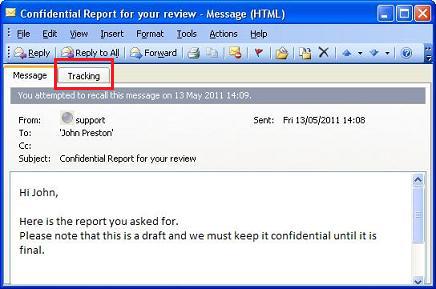

- #HOW TO RECALL AN EMAIL IN OUTLOOK OFFICE 365 ONLINE HOW TO#
- #HOW TO RECALL AN EMAIL IN OUTLOOK OFFICE 365 ONLINE UPDATE#
It’s best to retry the message trace in a few minutes.
Getting status – the delivery status is not known at a time. 
Filtered as spam – server filtered the message, which means it went to the Junk Email folder.

Quarantined – email never reached the mailbox, as it is held in quarantine.Pending – Exchange Online attempts to send the email.Message trace for such a message should include reasons for delivery failure. Then, Exchange Server creates separate copies to send them to each distribution group member. Expanded – the email was sent to a distribution group.If a user cannot find a message with this status, it might have been deleted, or moved by an Outlook rule. Delivered – the message reached the recipient.There is a total of 7 values of the delivery status for a message: Or to put it more bluntly – what happened to the email. Namely, the possible values of a delivery status.
#HOW TO RECALL AN EMAIL IN OUTLOOK OFFICE 365 ONLINE HOW TO#
Now, before going through how to do it, it might be useful to learn a bit of theory. Like any action in Office 365, message trace search requires certain permissions or rolesīy default, role group Organization Management has all of the required permissions. If an important email is purged before a litigation hold, or a retention policy is activated, logs can act as key evidence.
Message forensics – although message tracking logs and results of message tracing do not let the Administrator into the contents of an email, information about the sender, recipients, date, time, and size of the message can prove very valuable, for example, in case of litigation. As message tracing details provide detailed information about failures, you will be able to pinpoint which mail flow rule is at fault. Check if your mail flow rules work the way they should – it is not hard to make a mistake while configuring mail flow rules, especially in a large organization and when there are possible conflicts between different rules. Monitor mail flow – as message tracing collects data about all messages processed within the organization, the results can be used to gather statistic data. Finding a message that “someone was supposed to send me last week” might take a while, especially in larger organizations Of course, finding the right message quickly depends on how much info the user provides. Whenever a user or a client reports that some message seems to be missing, administrators can get to the bottom of the problem. Find and fix mail-delivery issues – the most basic and ‘traditional’ purpose for message tracing. There are quite a few different uses for this kind of information: Message tracing makes it possible to learn what happened to certain messages, even if they are not delivered, or get deleted. Practical application of message tracking It takes some time before search request even starts to be processed. Searching for emails older than ten days might take up to a few hours. Messages less than 4 hours old might not be available. Can be increased (or decreased.)ġ0 days for easily accessible message trace, 90 days for “Historical Search” – where results can only be viewed in a downloadable CSV file.Īll data about messages is available as soon as they are sent or received. PowerShell, alternatively - a text editor.Ĭonfigurable, by default 1000 MB for all message tracking log files in the set directory.īy default, 30 days before the oldest files are overwritten. Differences between message tracking logs and Office 365 Message tracing The most important one is that message tracking logs are simple text files you can access directly and copy for backup purposes, but also – delete manually. There are a few significant differences between message tracking logs in the on-prem Exchange and message tracking in Office 365. If a message is sent to more than one recipient, it will display once for every recipient in the message trace search, but all those entries will have the same Message ID and different Message Trace ID Message ID a unique number identifying a message. There are seven possible values in the delivery status field: delivered, failed, pending, expanded, quarantined, filtered as spam and unknown. Still, it can provide quite a lot of important data about emails: Message tracing does not allow you to peek into a message’s contents. No matter if users delete or purge messages, the administrator is able to view basic information about sent and received emails. As emails travel through Office 365, some information about them gets stored in logs and is available for administrative purposes. Message tracking, or message tracing, as it is called in Office 365, is one of the most basic tools used by administrators to monitor the email flow. 
#HOW TO RECALL AN EMAIL IN OUTLOOK OFFICE 365 ONLINE UPDATE#
UPDATE This article was updated on October 14, 2021








 0 kommentar(er)
0 kommentar(er)
